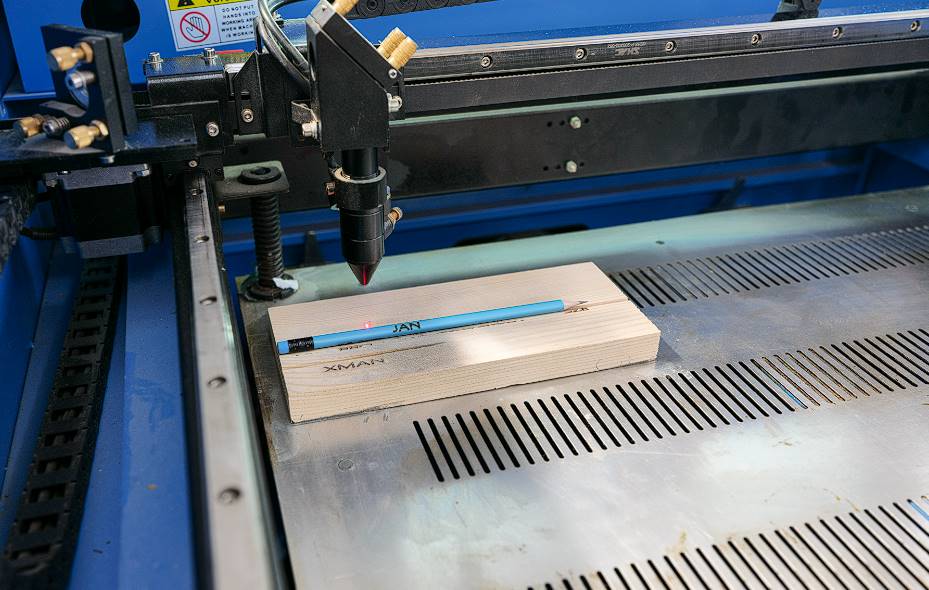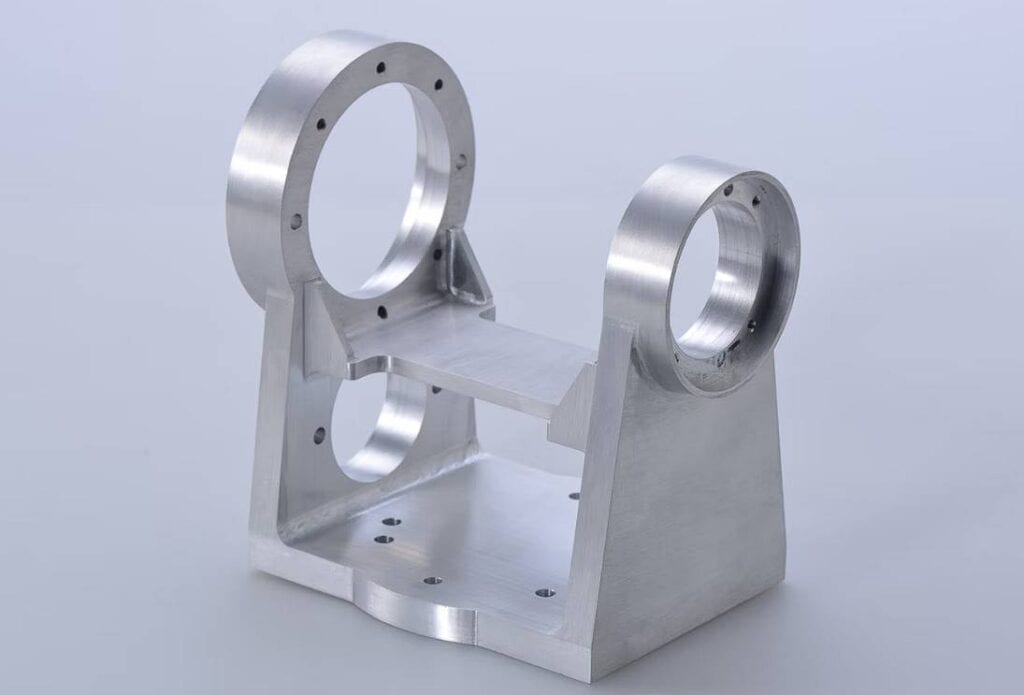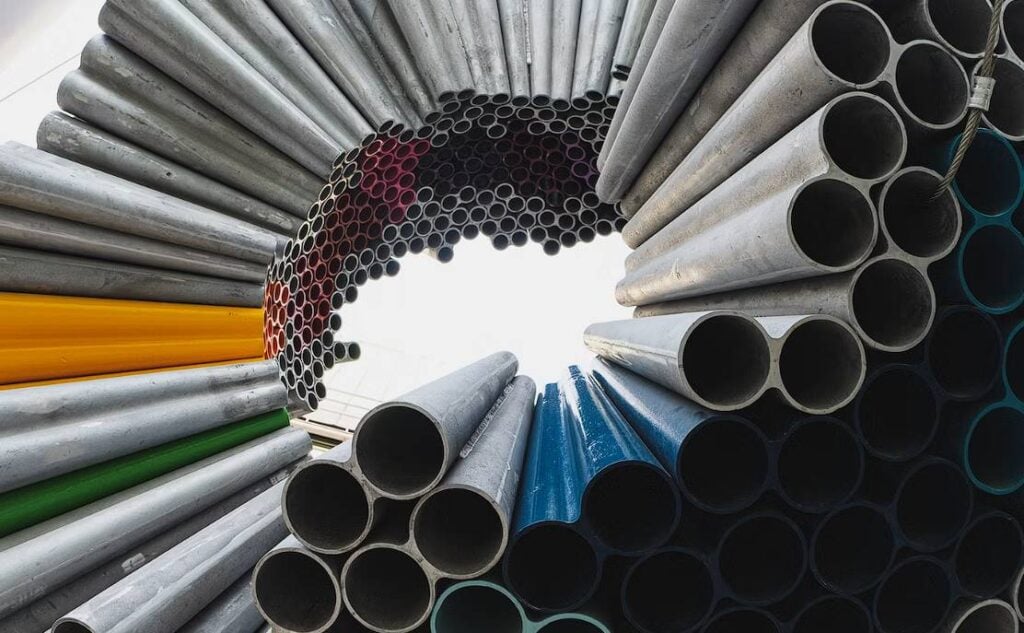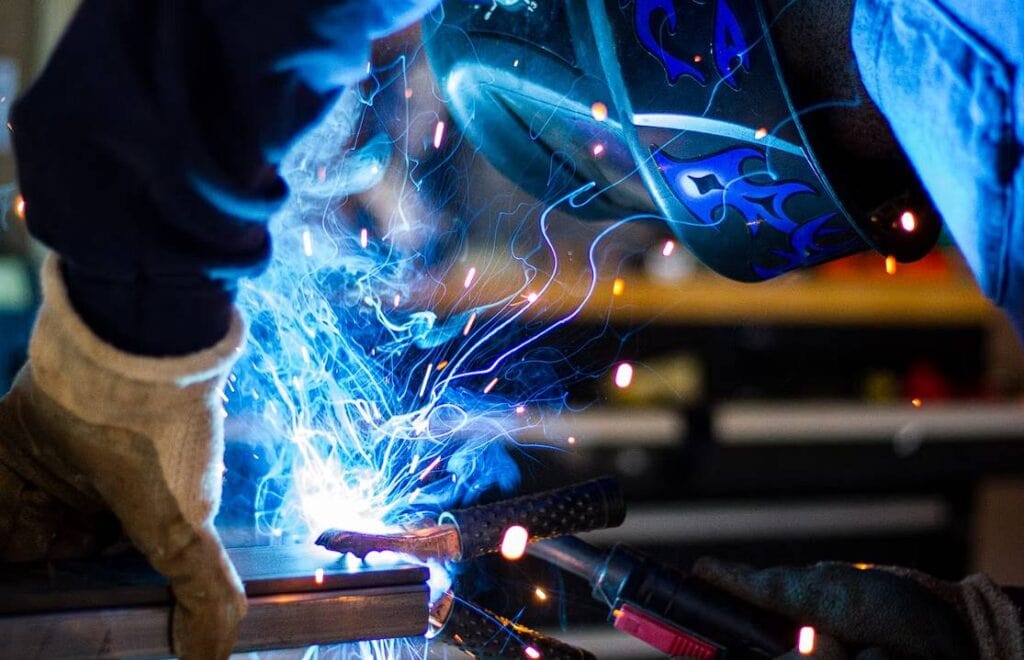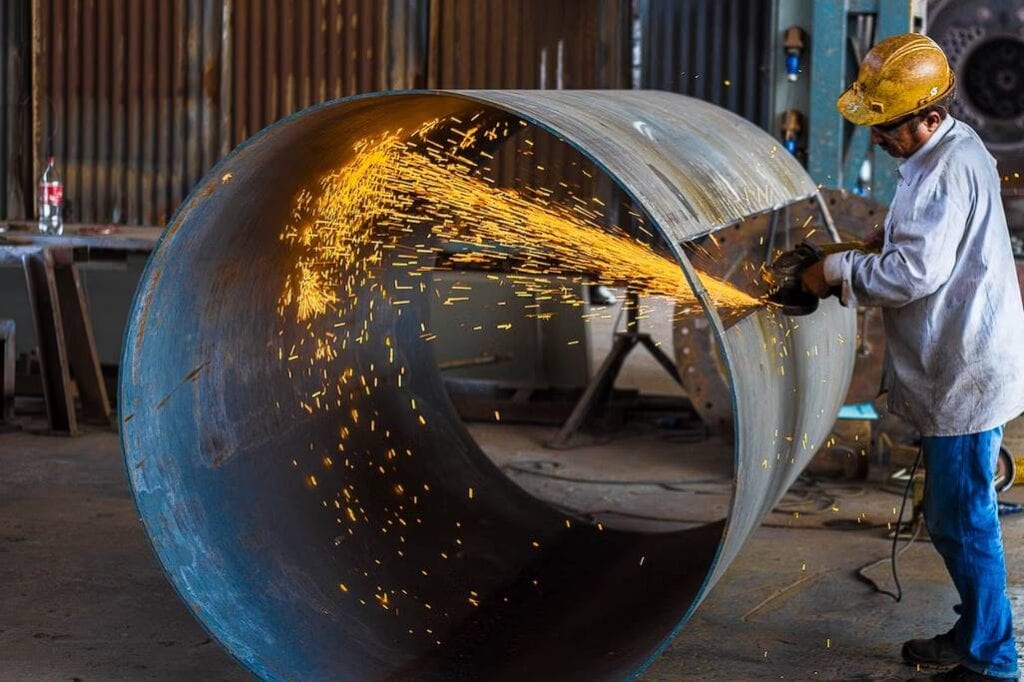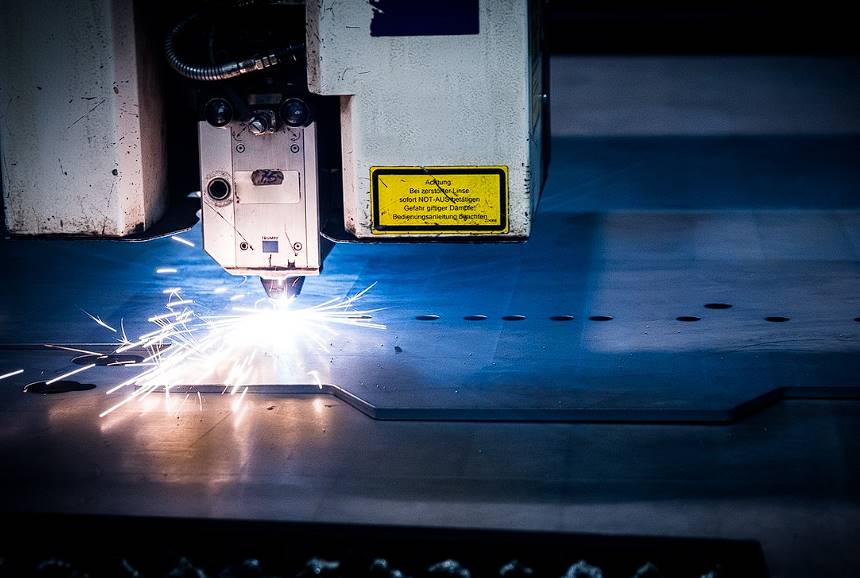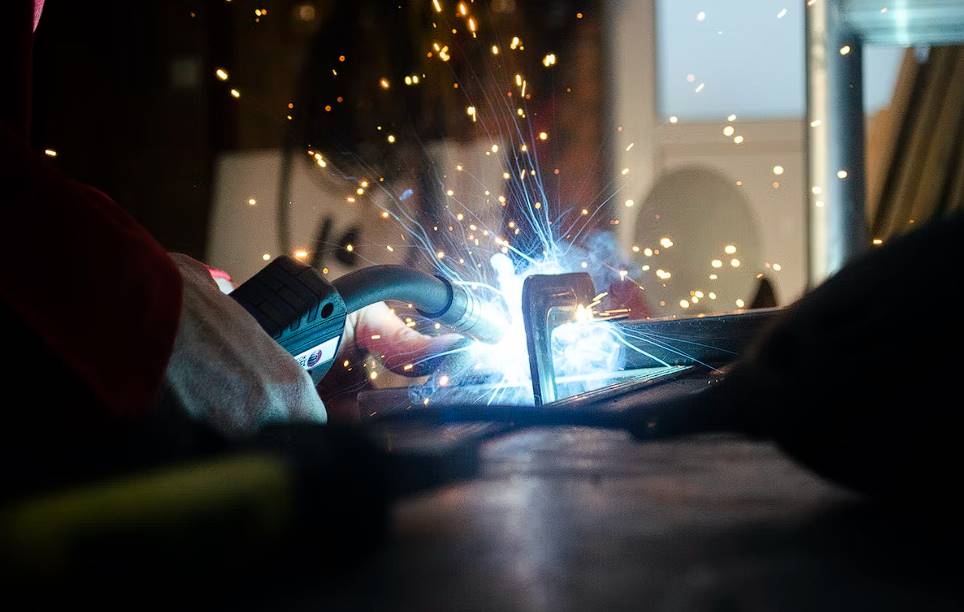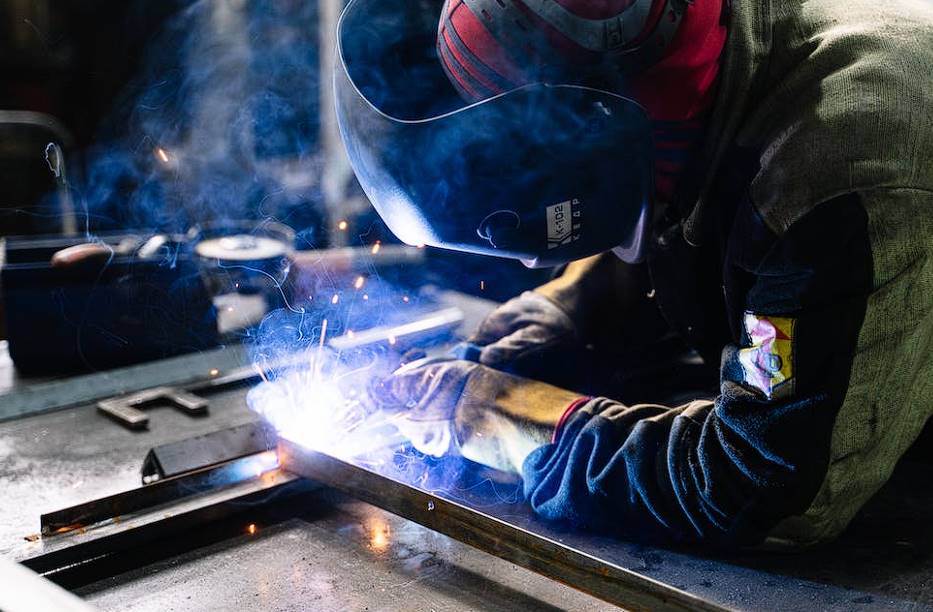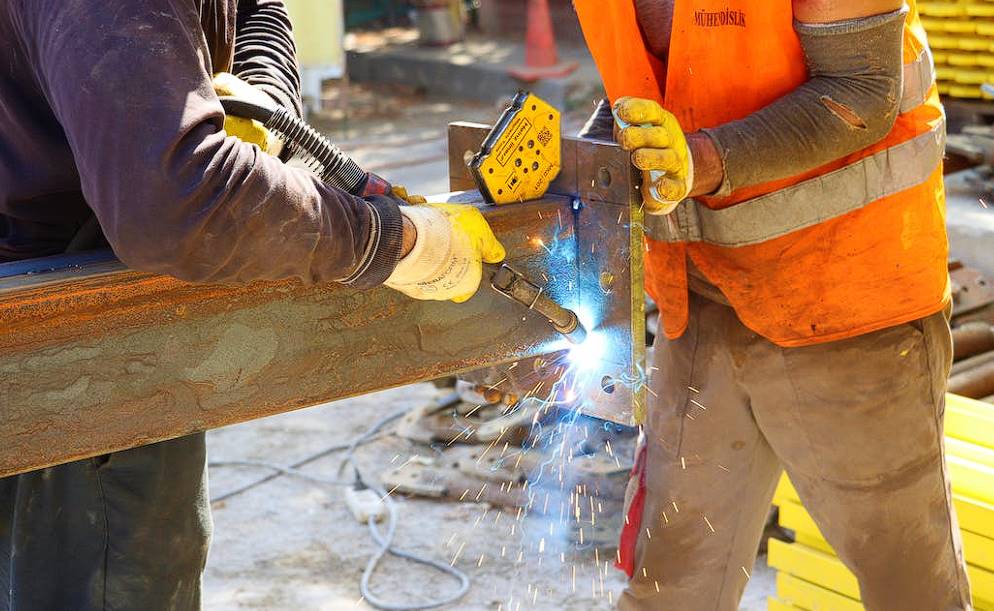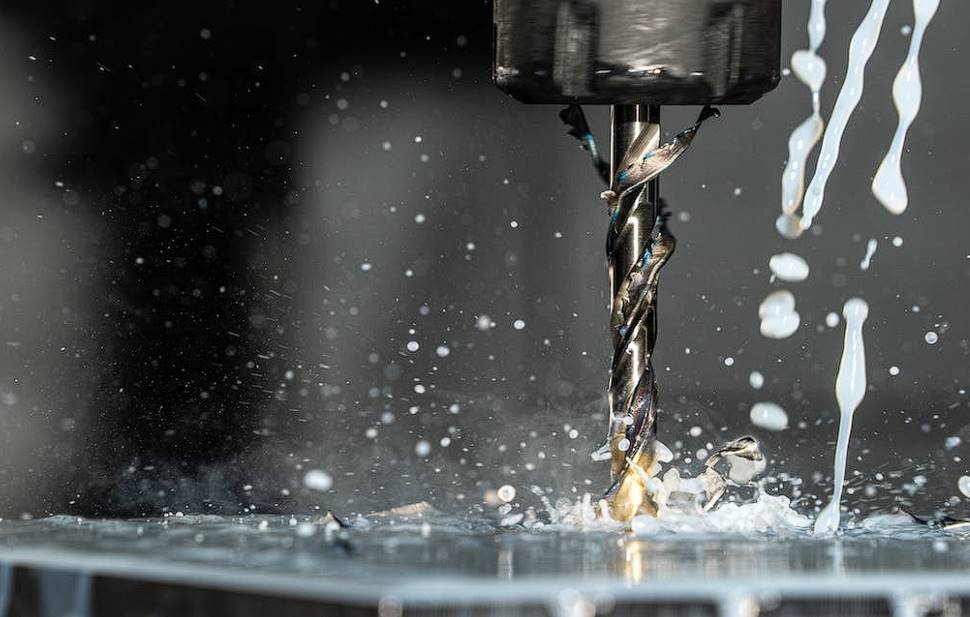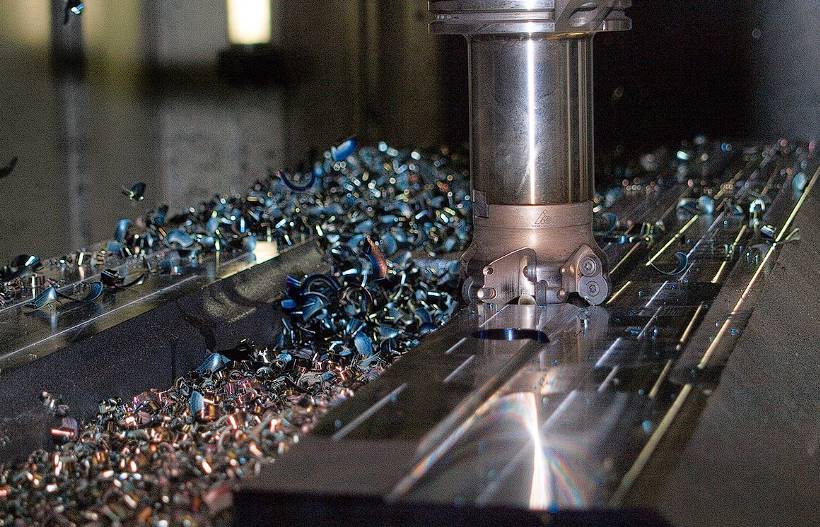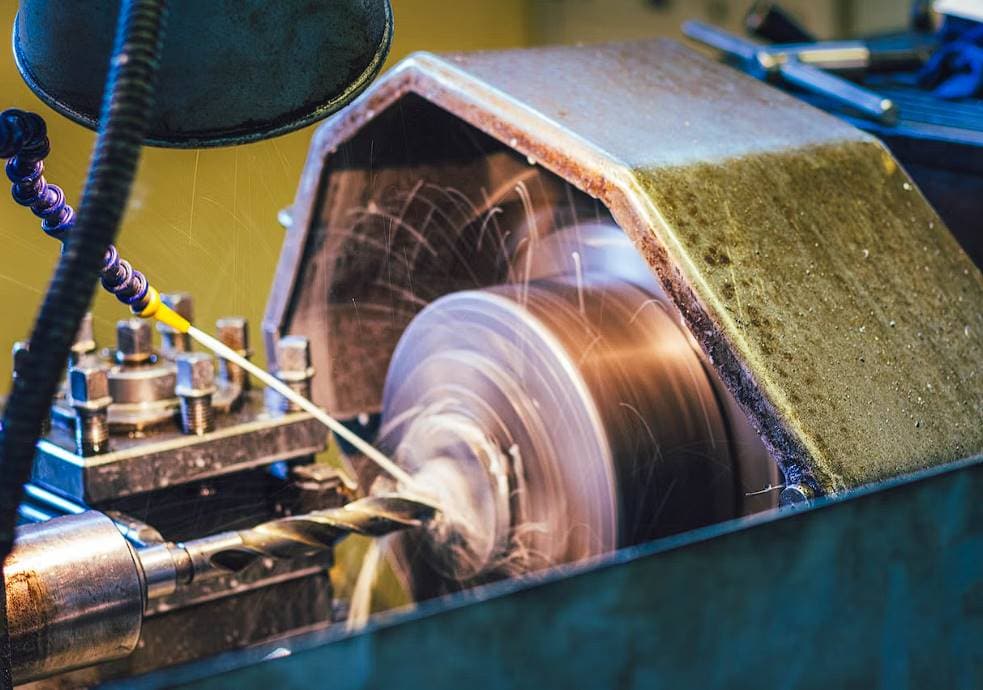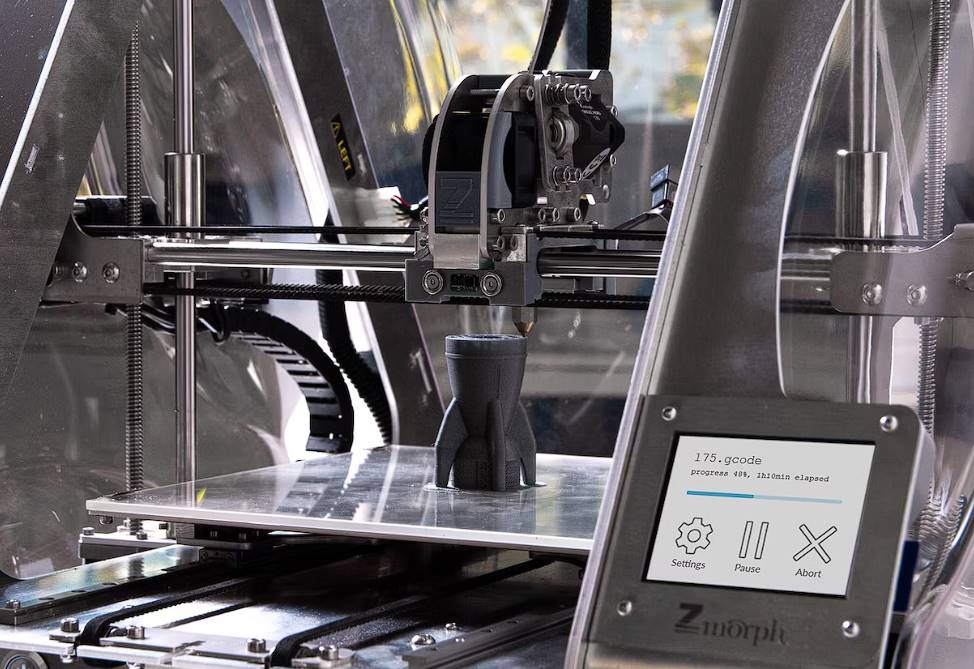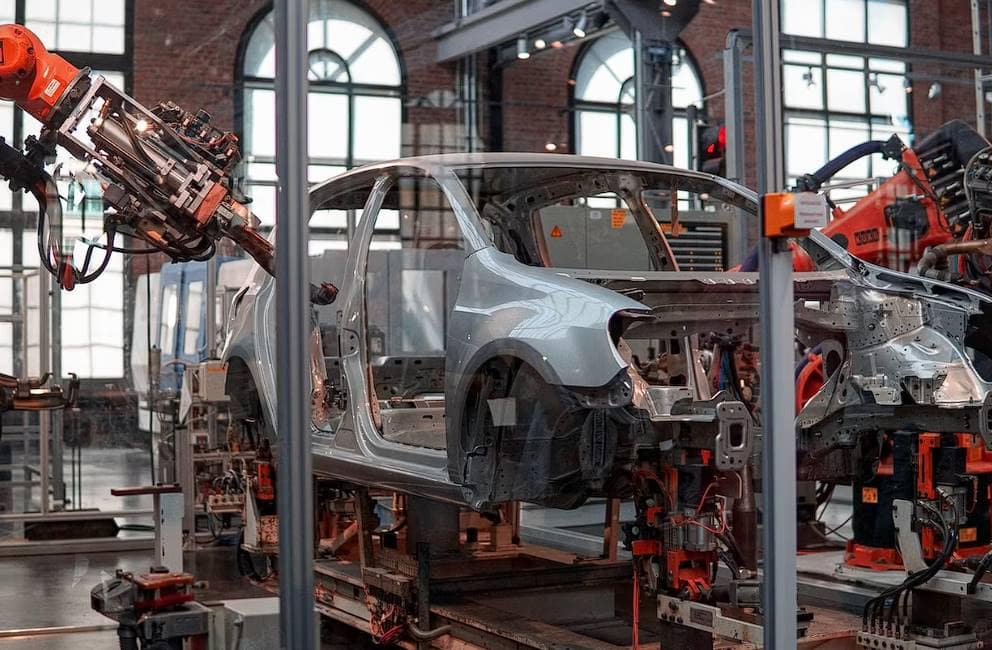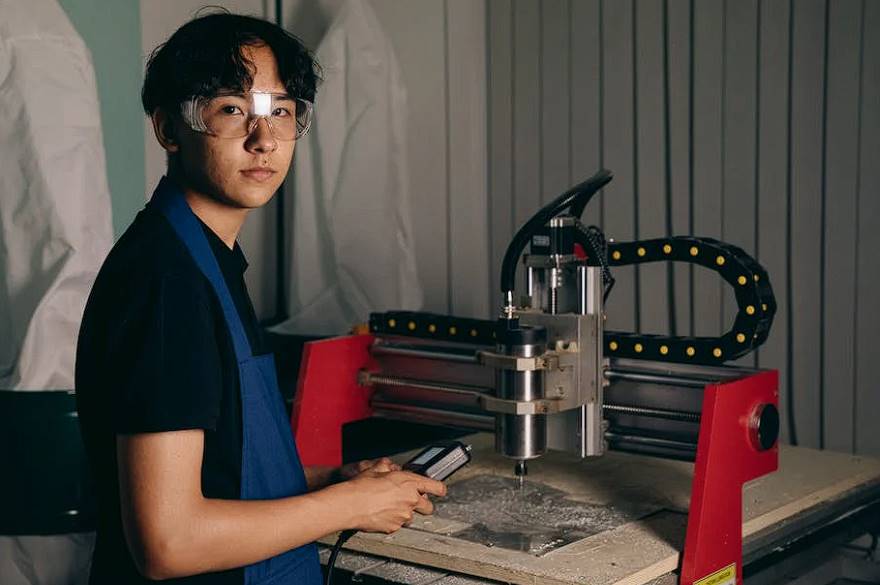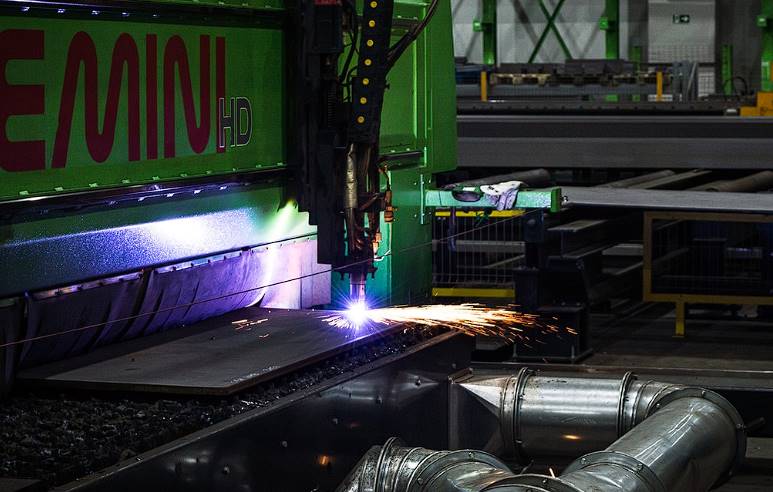Laser cutting's popularity has skyrocketed in the last few decades and is now an integral part of international trade. Laser cutting is used in seemingly infinite fields, from manufacturing to medicine. Its wares are available in every store imaginable. Microchip silicon is cut with lasers, corrective eye surgery is performed with lasers, and rocket ship cargo is built with lasers.
However, there is still a lot of information about laser cutting that still needs to be discovered to the general public. What is the mechanism, and how does it function? In what ways can it be used? In what ways can you, as an individual or a business, benefit from the laser cutting method?
Here, you'll learn everything you can possibly want to know about laser cutting. Starting with the nuts and bolts of how a laser cutter works and progressing to the various applications it can be put to, there is a lot to take in. Fortunately, the technology is just as easy for the brain to access as it is for the hand.
How Does Laser Cutting Work?
A laser cutting machine can perform the same functions as a CNC machine using a high-powered laser instead of a computer. The laser will act as a rail for the material or beam as it travels through the CNC and optical machinery. The CNC, or G-code, will direct the machine as it cuts the material.
When trained on an object, the laser will melt, vaporise, and burn. Using a gas jet to blow the material allows for a smooth, finished edge to be produced. The laser light is created inside a sealed container, activated by a lamp or an electrical discharge.
Light from a luminescent material can be amplified by reflecting some of it off of itself. Repeating this process until a coherent beam of light of a single colour emerges is possible. A mirror or fibre optic can concentrate light, extremely brightening a small spot.
At its narrowest point, the laser beam has a diameter of less than 0.32 millimetres. On the flip side, the incision width needs only be a tinier 0.10 mm if necessary. The answer, however, is conditional on the material's thickness. A perforation procedure is employed if a laser cutter is used to cut through the material from the centre outward rather than from the edge.
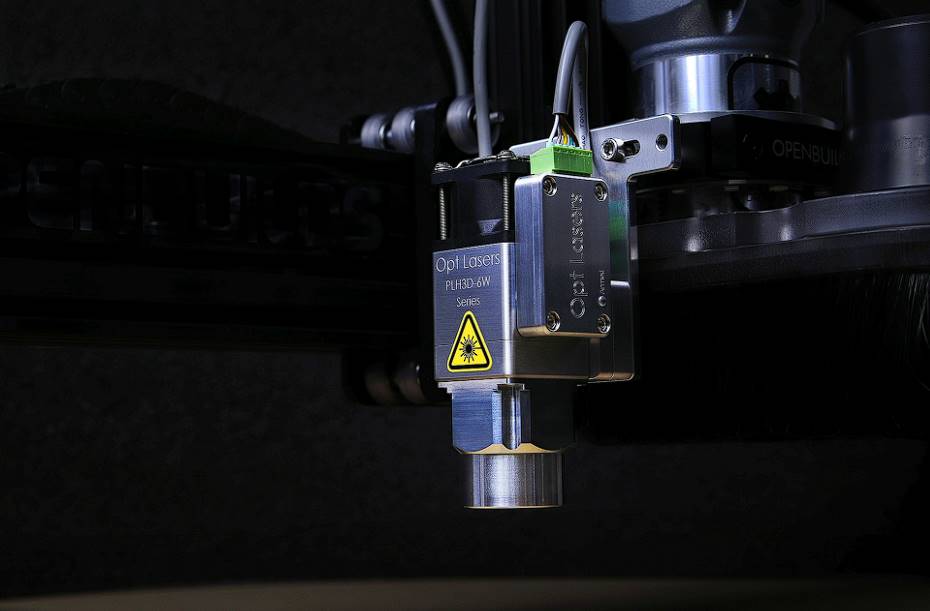
Techniques And Methods For Laser Cutting
A laser cutter is a cutting tool that uses concentrated heat or light to vaporise or melt its target material. However, the means by which this power is transmitted can vary.
Some typical applications of laser cutting are as follows:
Flame Cutting
Laser flame cutting, distinct from oxy-acetylene cutting, employs oxygen to aid in the cutting process by producing an exothermic oxidation reaction that aids in lowering laser energy needs. The molten material is physically blown out of the cut using oxygen. The term "reactive laser cutting" describes this method.
Thermal Stress Fracture
Cutting by producing stress in the base material is a thermal stress fracture. One technique used to cut aluminium nitride involves melting a very thin layer of material on the item's surface to generate aluminium oxide. Due to their different thermal expansion ratios, aluminium oxide and the base aluminium nitride cause a stress field that cracks the part along the laser line as they cool at different rates.
Laser Rastering
When engraving images onto different materials, laser rastering is the method of choice. This method involves taking a bitmap and turning it into instructions that a laser cutter can follow. The laser then permanently burns the image into the surface of the material.
The precision and adaptability of laser rastering make it possible to create works of art with extraordinary detail. This method yields superb engravings on any material, whether wood, metal, glass, or stone. Laser rastering, with its ability to replicate complex pictures, has emerged as the preferred method for engraving projects, providing an ideal fusion of artistic expression with state-of-the-art precision.
Fusion Cutting
When a laser beam creates a cut in a material, a high-pressure jet of an inert gas such as argon or nitrogen is used to blow out the molten material, resulting in a clean cut. Since the gas will be introduced into the molten metal, it must be inert. The inert gas also acts as a shielding gas, protecting the molten edge from outside forces.
Remote Cutting
Cutting thin or delicate materials with a remote cutter, also known as sublimation or evaporation, is common. Cutting with a laser eliminates the need for gas, and most commonly, a galvo scanner is used to move the laser in a desired direction via a set of mirrors. In place of gas, the laser vaporises or ablates the material. Remote cutting of thin materials can be very fast.
Vector Cutting
Laser cutting in the form of "vector cutting" is performed on components with straight, geometrical lines. Commercial ad signs are a good example of this. The laser usually makes clean, straight cuts.
Types Of Laser Cutting
There are primarily three kinds of lasers used for cutting. These lasers include carbon dioxide (CO2), neodymium yttrium aluminium garnet (Nd: YAG), and fibre. The material from which the laser light is emitted sets them apart.
Carbon Dioxide Lasers
The lasers of this type use a gas discharge medium composed of helium, hydrogen, xenon, and a small amount of carbon dioxide (10-20%). Discharge current, rather than light, is used to "pump" a laser.
As the discharge travels through the light source, it raises the energy level of the nitrogen molecules there. Unlike previously stated, excited nitrogen molecules do not suffer energy loss via photon emission.
Instead, it uses its vibrational modes to impart energy onto the CO2 molecules. This procedure is repeated until the vast majority of CO2 molecules have entered the transportable phase. The carbon dioxide molecules emit infrared light at 10.6 or 9.6 microns, reducing their energy.
For this reason, resonant mirrors are built to reflect light at these specific wavelengths properly. A mirror is a type of partial reflector that lets the infrared beam utilised to cut the material escape.
When the infrared light is dissipated, the energy is transferred to the doped helium atoms, and the CO2 molecule relaxes to its ground state. The laser's cooling system then returns the once-cold helium atoms to temperature. When compared to other lasers, CO2 lasers' efficiency of around 30% is significantly higher.
Fibre Lasers
Fibre lasers are a relatively recent innovation in the laser industry, with light being emitted via optical fibres as opposed to gases (CO2 lasers) or crystals. Fibre lasers, like crystal lasers, are solid-state devices that emit light using optical fibres.
Erbium and ytterbium are among the elements doped into the optical fibre. The wavelengths of light emitted by erbium range from 1528 to 1620 nm. The wavelengths of light emitted by ytterbium are 1064 nm, 1030 nm, and 1080 nm.
It is well-established that an optical fibre can transmit light with negligible loss of energy. That's why optical fibres are more reliable than other materials that need precise positioning.
Crystal (Ruby, Nd And Nd-YAG) Lasers
In contrast to CO2 lasers, this laser is a solid-state device in which synthetic crystals serve as the light-emitting medium. YAG (Y3Al5O12) crystals containing 1% ionised neodymium (Nd3+) are the most frequently used.
Nd ions have replaced the Y ions in the crystal structure. Each rod is between 6 and 9 centimetres in diameter and 10 centimetres in length. The resonator system consists of YAG rods with highly reflective coatings on their ends.
Laser pumping can be accomplished with a krypton flash or a laser diode. The neodymium ions are excited to higher energy levels thanks to the laser pumping. Excited neodymium ions eventually relax to a lower, more stable state where they cease radiating light. This process keeps going until excited Nd ions populate the entire medium. An infrared wavelength of 1064 nm is emitted from degraded Nd ions.
Advantages Of Laser Cutting
More Affordable And Lower Cost
One of the benefits of laser technology is that laser cutting is more cost-effective than comparable CNC machines. Thanks to laser cutting technology, specialised tools are now unnecessary. Since no special cutting tools are required, adapting the equipment for use on any given project is unnecessary.
There is also no abrasion because of the lack of direct contact. Laser-cutting machines have fewer moving parts than other processing technologies, so they require less upkeep. The machine will also have a lower cost of operation than more conventional manufacturing methods.
High Sheet Usage And Minimal Waste
Laser cutting results in minimal scrap material when cutting thicker materials. Because of this, laser cutting is superior to other methods when cutting through a substantial amount of material. Using a laser cutter allows factories to get the most out of their raw materials. Less material is wasted, and production costs drop as a result of more efficient use of resources.
Low Power Consumption
If you want to make a real cut, having a lot of power will help. On the other hand, laser-cutting machines have no other moving parts, so they use significantly less power. However, machines with moving parts typically have higher energy requirements. In addition, laser cutters can quickly slice through any material. Reduces the need for both energy and time. Less energy use results in lower operating costs.
Accuracy And High Precision
To precisely cut materials, lasers concentrate a beam of light. The laser's power and small size make it ideal for accurately melting and evaporating materials. Tolerances for lasers are typically between 0.003 mm and 0.006 mm.
Plasma cutters have a higher tolerance level than laser cutters, at around 0.02 mm. Other cutting tools also have tolerance levels of up to three millimetres. There's a need for a machine of exceptionally high accuracy and precision in the factory.
A laser cutter is typically used for this purpose. Since laser cutting requires such precise measurements, it is widely used in the aerospace industry.
For Extremely Difficult Jobs
Since laser-cutting machines are able to work on even the tiniest edges of the material, they can simplify many jobs that would otherwise be difficult for other cutting technologies to do. It is possible to manufacture complex shapes with a laser cutter swiftly. However, the cut area may be slightly warped or twisted. Laser cutting has a flexible tolerance range and can be used with many materials.
Damage Prevention
Laser cutting is advantageous because it minimises the risk of damage to even the thinnest materials. Many people have the false impression that using the device will inevitably result in material distortion or degradation.
This common misconception holds that intense heat is necessary for the laser-cutting process. Heat does not affect tolerances and only affects a small portion of the material. Sheets can be laser cut in record time, reducing production time. Therefore, warping and distortion can be easily avoided during production.
Disadvantages Of Laser Cutting
Fire Risk
Laser cutters pose a fire hazard because the light they emit can cause nearby flammable materials to heat up to dangerous levels.
Creates Dangerous Dust And Fumes
The proper removal of these from the workspace is necessary to ensure the safety of the operators and the industrial equipment.
Master, It May Take Some Time.
It may take some time to become proficient in using a laser cutter because there is a great deal of information to learn about the various settings and how they affect the cut and because there are so many settings.
It Might Be Expensive
The initial investment in a laser cutter can be substantial, and the operating costs (such as the amount of power consumed) can also add up quickly.
Requires A Fair Amount Of Maintenance
Mirrors and lenses must be kept clean and in alignment and calibrated regularly by experts.

Application Of Laser Cutting
As was already mentioned, the field of laser cutting is a fascinating one that is constantly developing.
Some of the most common current applications for laser cutting are listed below.
Automotive Industry
As a result of laser cutting's speed and accuracy in producing duplicate parts, it has found a place in the automotive sector. In the automotive industry, precise reproduction of parts of varying shapes and sizes is essential. Metals and plastics are cut with lasers to create car panels, buttons, and electronic components.
Laser-cutting machines also can engrave buttons inside vehicles to let light in and to record serial and part numbers permanently. Lasers can also cut the moulds used to make the various components.
Hydroformed components can be cut with a laser cutter. These are usually solid tubes that provide structural support for the vehicle. Engine frames and instrument panels are common applications for these components.
Silicon Manufacturing
Silicon has many uses and is another material amenable to laser cutting. Engineers can use precision cutting to create silicon components that are smaller in size than those made using alternative cutting methods.
Silicon can withstand high temperatures and doesn't degrade over time; additionally, it's very malleable. The most common places to find silicon are electronics, computers, textiles, home goods, vehicles, and building materials.
Industry Of Mould And Tooling
As previously mentioned, moulds for duplicate components can be made using laser cutting. Since the laser can cut metal at varying depths, precise moulds for stamped parts can be made and reused repeatedly in a reliable die-cutting process.
Laser-cutting mould copies is a fast and precise method of duplication. The accuracy of injection moulds is comparable to that of moulds made with laser cutting.
This streamlines the mould-making process, allowing for more rapid and less expensive mould reproduction with greater precision.
Laser cutters have a wide range of applications in the tool industry, from marking and engraving in the automobile sector to the production of simple hand tools. Laser cutters may be superior to die-cutting on tough metals due to their increased efficiency. Rubber is so adaptable that most tool handles can have company logos and laser-engraved information.
Ceramic Manufacturing
Engineers can take advantage of ceramics' wide range of properties in a wide variety of contexts. Because of their low thermal and electrical conductivity, they make for great insulators. They have a high melting point, are incredibly tough, and do not react with other chemicals.
Lasers are frequently used to cut ceramics quickly without compromising on the quality of the cut. Ceramic components are used in various machines and appliances, including jet engine motors, electric motors, speakers, generators, headphones, rice cookers, and even incandescent light bulbs.
Conclusion
Laser cutting has become an integral part of international trade, used in various fields such as manufacturing, medicine, and rocket ship cargo. Its popularity has skyrocketed in recent decades, with lasers being used in microchip silicon, corrective eye surgery, and rocket ship cargo. Laser cutting works by using concentrated heat or light to vaporize or melt its target material, with various techniques and methods. Some typical applications include flame cutting, thermal stress fracture, laser rastering, fusion cutting, remote cutting, and vector cutting.
There are three main types of lasers used for cutting: carbon dioxide (CO2), neodymium yttrium aluminium garnet (Nd: YAG), and fiber. Carbon dioxide lasers use a gas discharge medium composed of helium, hydrogen, xenon, and a small amount of carbon dioxide (10-20%). The laser uses its vibrational modes to impart energy onto the CO2 molecules, reducing their energy. Fiber lasers emit light via optical fibres, with erbium and ytterbium being doped into the optical fibre.
Crystal lasers are solid-state devices emitting light using synthetic crystals, with YAG (Y3Al5O12) crystals containing 1% ionised neodymium (Nd3+) being the most frequently used. These lasers are more reliable than other materials that need precise positioning due to their negligible energy loss.
In summary, laser cutting is a versatile and versatile tool that can be used in various fields, including manufacturing, medicine, and rocket ship cargo. Understanding the mechanisms, techniques, and applications of laser cutting is essential for individuals and businesses alike. Laser cutting is a cutting technology that uses neodymium ions to replace Y ions in the crystal structure. These neodymium ions are excited to higher energy levels, resulting in a high melting point and reduced abrasion. Laser-cutting machines have fewer moving parts, requiring less upkeep and lower operating costs than conventional manufacturing methods.
Laser cutting is more affordable and lower cost than comparable CNC machines, eliminating the need for specialized tools and reducing abrasion. It also has high sheet usage and minimal waste, making it superior to other methods in cutting through large amounts of material. Laser-cutting machines have low power consumption, making them more efficient and cost-effective.
Laser cutting is ideal for melting and evaporating materials, with tolerances ranging from 0.003 mm to 0.006 mm. It is widely used in the aerospace industry for precise measurements and is suitable for extremely difficult jobs. It can also be used for manufacturing complex shapes, but the cut area may be slightly warped or twisted.
However, laser cutting has some drawbacks, such as fire risk, creating dangerous dust and fumes, taking time to become proficient, being expensive, and requiring regular maintenance.
The field of laser cutting is constantly developing, with applications in the automotive industry, semiconductor manufacturing, mold and tooling, and ceramic manufacturing. In the automotive industry, laser cutting is used to produce duplicate parts of various shapes and sizes, while in the mold and tooling industry, laser cutters are used to create precise molds for stamped parts.
In the ceramic manufacturing industry, laser cutters are used to cut ceramics quickly without compromising the quality of the cut. These materials are used in various machines and appliances, such as jet engine motors, electric motors, speakers, generators, headphones, rice cookers, and incandescent light bulbs.
Content Summary
- Laser cutting has become an integral part of international trade and is used in various fields, from manufacturing to medicine.
- Laser cutting is used to cut microchip silicon, perform corrective eye surgery, and build rocket ship cargo.
- Laser cutting works by using a high-powered laser to melt, vaporize, and burn the material, resulting in a smooth, finished edge.
- Different techniques and methods are used in laser cutting, including flame cutting, thermal stress fracture, laser rastering, fusion cutting, remote cutting, and vector cutting.
- There are three primary types of lasers used in cutting: carbon dioxide (CO2) lasers, fiber lasers, and crystal lasers.
- Laser cutting is more affordable and cost-effective than comparable CNC machines, as it requires no special cutting tools and has lower maintenance requirements.
- Laser cutting results in high sheet usage and minimal waste, maximizing the efficiency of raw materials.
- Laser cutting has low power consumption, reducing operating costs and energy usage.
- Laser cutting offers high accuracy and precision, with tolerances as small as 0.003-0.006 mm.
- Laser cutting is suitable for difficult jobs and can cut complex shapes swiftly.
- Laser cutting minimizes the risk of material damage and distortion, making it ideal for thin materials.
- Disadvantages of laser cutting include fire risk, generation of dangerous dust and fumes, the learning curve for operation, and initial and operating costs.
- Laser cutting finds applications in the automotive industry, silicon manufacturing, mold and tooling industry, and ceramic manufacturing.
- In the automotive industry, laser cutting is used for precise reproduction of parts, cutting metals and plastics, and engraving buttons.
- Laser cutting is used in silicon manufacturing for creating smaller components with precision.
- Laser cutting is utilized in the mold and tooling industry for making precise molds and tool duplication.
- Ceramic manufacturing benefits from laser cutting for quick and quality cutting of ceramics used in various applications.
- Laser cutting technology continues to evolve, offering new possibilities and applications in different industries.
Frequently Asked Questions
While laser cutting is a versatile process, it does have some limitations. It may not be suitable for cutting highly reflective materials, such as copper or aluminium, as the laser beam can be reflected instead of absorbed. Very thick or dense materials may also require multiple passes or alternative cutting methods.
Laser cutting finds applications in various industries, including manufacturing, automotive, aerospace, electronics, signage, jewellery, and architectural design. It is used for cutting parts, creating intricate patterns, engraving, etching, and prototyping.
Laser cutting can be safe when proper precautions are taken. The laser systems used for cutting are typically enclosed to prevent direct exposure to the laser beam. Operators should wear appropriate protective eyewear and follow safety guidelines to minimise potential risks.
The cost of laser cutting depends on various factors, including the material being cut, the thickness, the complexity of the design, and the number of parts. Set-up costs and machine time also contribute to the overall cost. It is best to consult with a laser-cutting service provider to obtain accurate pricing information.
Yes, laser cutting can be combined with other manufacturing processes such as laser engraving, bending, welding, or additive manufacturing (3D printing). These processes can be integrated to create more complex and finished products.

